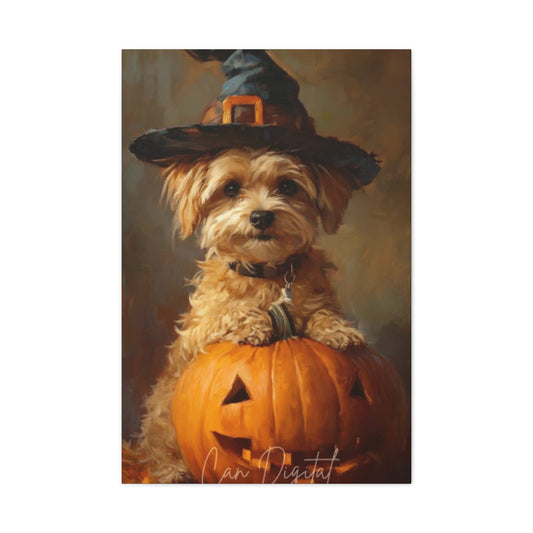The contemporary revival of agricultural-inspired interior design represents a profound shift in residential aesthetics, reflecting society's yearning for authentic connections to pastoral traditions while maintaining the conveniences and sophistication demanded by modern lifestyles. This extraordinary design movement transcends mere aesthetic preferences to encompass a comprehensive lifestyle philosophy that prioritizes comfort, sustainability, and genuine craftsmanship over superficial ornamentation and mass-produced furnishings.
The fundamental appeal of this design approach lies in its remarkable ability to synthesize seemingly contradictory elements: the rough-hewn authenticity of rural craftsmanship with the refined sensibilities of contemporary design theory. This harmonious balance creates living environments that feel simultaneously grounded in tradition and thoroughly modern, offering residents the psychological comfort of nostalgic familiarity while providing all the functional advantages of twenty-first-century living.
Professional interior designers increasingly recognize the therapeutic benefits of environments that incorporate natural materials, handcrafted elements, and organic color palettes reminiscent of pastoral settings. These spaces demonstrate measurable impacts on stress reduction, emotional wellbeing, and overall life satisfaction through their emphasis on tactile experiences, visual warmth, and connections to agricultural heritage that resonates deeply with human psychological development.
The philosophical underpinnings of contemporary rustic design extend beyond aesthetic considerations to embrace broader cultural movements toward sustainability, artisanal craftsmanship, and conscious consumption. Homeowners adopting these design principles often demonstrate heightened awareness of environmental impact, supporting local craftspeople and choosing materials with minimal ecological footprints while creating spaces that reflect personal values and lifestyle priorities.
The versatility of this design approach enables successful implementation across diverse architectural styles and regional contexts, from urban lofts seeking pastoral warmth to suburban homes embracing rural authenticity. This adaptability stems from the movement's focus on materials, textures, and craftsmanship rather than rigid stylistic formulas, allowing for personalized interpretations that reflect individual preferences while maintaining core design principles.
Contemporary technology integration within rustic design frameworks requires careful balance to maintain authentic atmospheres while providing modern conveniences. Successful implementations seamlessly incorporate smart home systems, energy-efficient appliances, and contemporary lighting solutions without compromising the organic, handcrafted aesthetic that defines superior rustic interiors.
Sophisticated Minimalism with Pastoral Undertones
The intersection of contemporary minimalism with agricultural aesthetics creates extraordinarily refined living environments that demonstrate remarkable restraint while maintaining the warmth and authenticity characteristic of traditional rural settings. This sophisticated approach eliminates superfluous ornamentation while preserving essential elements that convey pastoral heritage through carefully selected materials, subtle textures, and thoughtfully curated accessories.
The success of minimalist rustic implementations depends heavily on masterful material selection that emphasizes quality over quantity, featuring exceptional craftsmanship in fewer pieces rather than numerous decorative elements that might create visual chaos. Premium hardwood flooring, expertly finished natural stone surfaces, and meticulously crafted furniture pieces become focal points that demonstrate superior artisanship while maintaining the serene simplicity that defines contemporary minimalist aesthetics.
Color palette sophistication in these environments typically embraces extensive neutral foundations enhanced by warm undertones that prevent sterile appearances while supporting the psychological comfort associated with pastoral settings. Cream, ivory, sage, and warm gray selections create harmonious backgrounds that showcase natural materials and handcrafted elements without competing for visual attention or overwhelming the senses with excessive chromatic stimulation.
Lighting design plays crucial roles in minimalist rustic spaces, as reduced decorative elements place greater emphasis on architectural features and material qualities that benefit from strategic illumination. Natural light optimization through unobstructed windows, skylights, and glass doors connects interior spaces with outdoor environments while artificial lighting systems emphasize texture, grain patterns, and surface variations that demonstrate material authenticity.
The psychological appeal of minimalist rustic environments stems from their ability to create sanctuary-like atmospheres that provide respite from external complexity while maintaining visual interest through superior craftsmanship and material quality. These spaces support contemplation, relaxation, and mindful living practices through their emphasis on essential elements rather than superficial decoration.
Storage solutions in minimalist rustic implementations require innovative approaches that maintain clean lines while accommodating practical lifestyle needs. Built-in cabinetry, hidden storage systems, and multi-functional furniture pieces enable clutter-free environments while preserving the authentic materials and handcrafted details that define superior rustic design.
Compact Spaces Maximizing Rustic Authenticity
The increasing trend of downsizing living spaces has brought forward the challenge of balancing the charm of rustic design with the constraints of smaller, more compact rooms. Many homeowners face the dilemma of maintaining the rustic aesthetic—defined by its warmth, natural materials, and pastoral charm—while maximizing limited square footage for functionality. However, it is entirely possible to achieve a rustic aesthetic within small spaces by leveraging smart design strategies, multifunctional furniture, and thoughtful material choices.
Maximizing rustic authenticity in compact spaces requires a deep understanding of how to creatively use space, light, and materials. It's about emphasizing quality craftsmanship, strategic design elements, and ingenious solutions to maintain the rustic spirit without compromising comfort or practicality. This article delves into the various approaches that allow homeowners to bring the rustic charm into small living spaces, ensuring they remain both functional and authentic.
Vertical Space Utilization: Drawing the Eye Upwards
In compact spaces, one of the most valuable design strategies is utilizing vertical space to create a sense of volume and expand the perception of the room. Traditional rustic design often features exposed ceiling beams, tall storage units, and vertically oriented artwork, all of which serve to increase spatial perception by drawing the eye upwards. This is particularly beneficial in small rooms where floor space is at a premium.
Exposed beams, a hallmark of rustic architecture, not only enhance the authenticity of the design but also introduce a sense of grandeur and timelessness. The texture of the beams—whether made of reclaimed wood or unfinished timber—adds organic warmth and natural character, which are foundational to rustic style. These beams can serve as focal points, making the room feel more expansive and connected to traditional agricultural spaces.
Moreover, using tall storage units or vertical shelving allows for the practical organization of items while saving precious floor space. Shelving can be made from wood, iron, or a combination of the two to retain the rustic flavor of the room. These vertical storage options also create opportunities for displaying vintage decor, small antiques, or handmade pottery, elements that enhance the rustic atmosphere.
Artwork plays a key role in this vertical strategy as well. By strategically placing larger, vertically oriented pieces of art or vintage mirrors on the walls, you can add dimension to the room, making the space appear taller and more open. Art with rustic themes such as pastoral landscapes, weathered barns, or hand-painted signage connects deeply with the natural world and complements the rustic ambiance.
Multi-Functional Furniture: Maximizing Utility Without Sacrificing Aesthetics
In small rustic environments, every piece of furniture must serve multiple functions to maximize the utility of available space. Multi-functional furniture pieces such as storage ottomans, expandable dining tables, and modular seating arrangements not only offer functionality but also contribute to the rustic aesthetic by incorporating natural, handcrafted materials. These furniture selections allow homeowners to make the most of their limited space without sacrificing style or comfort.
A classic example of multi-functional rustic furniture is the storage ottoman. Crafted from distressed leather or wood with metal accents, storage ottomans provide hidden compartments for organizing household items while doubling as seating or a coffee table. Their aged finishes and natural textures align with the rustic aesthetic, making them both practical and visually cohesive with the overall design.
Expandable dining tables are another excellent solution for small rustic spaces. These tables can accommodate extra guests during gatherings while easily collapsing to save space when not in use. Featuring reclaimed wood or distressed finishes, these tables retain their rustic charm while serving as functional, space-saving solutions.
Modular seating arrangements also offer flexibility in smaller spaces. By choosing a combination of armchairs, sofas, and ottomans that can be rearranged or folded, homeowners can create more open space when necessary, transforming the room from a cozy sitting area into an expansive entertaining space.
Color Strategy: Light, Warm Tones to Create the Illusion of Space
Color plays an essential role in compact rustic spaces. Lighter tones are particularly beneficial as they can create the illusion of a larger space. When choosing colors for walls, ceilings, and furniture, opt for shades of white, cream, soft beige, and pale wood tones. These colors reflect light and make the room feel airy and spacious while still retaining the warmth and intimacy that define rustic style.
The use of neutral colors is vital in ensuring the rustic space does not feel overly cramped or dark. Whitewashed walls or light-toned timber floors enhance natural light, making the space feel open and inviting. Light colors also allow the natural textures of wood, stone, and metal to stand out, adding to the rustic character of the room.
That said, strategic use of deeper, richer tones can help balance the lightness, creating focal points and adding visual interest. Incorporating rustic browns, deep greens, and muted reds into accent walls, throw pillows, or rugs adds depth and prevents the space from feeling monotonous. The careful contrast between light and dark tones highlights architectural features and craftsmanship, drawing attention to elements like wood beams, vintage furniture, or antique decor.
Maximizing Natural Light: A Vital Component of Rustic Charm
In small rustic spaces, maximizing natural light is not just about illumination—it's about amplifying the natural beauty of materials and creating an open, welcoming atmosphere. Large windows, skylights, and open spaces are key elements in rustic homes, allowing ample light to flood the room and highlight the texture and detail of wood, stone, and handcrafted furniture.
Where possible, prioritize larger windows or glass doors that open to outdoor views, allowing the connection with nature to feel seamless. The abundance of natural light reflects off light-toned surfaces, enhancing the room's spaciousness and warmth.
Where privacy is a concern, window treatments should be simple and natural. Opt for light fabrics such as linen or cotton for curtains or blinds, or use wood slat blinds to echo the room's rustic materials. The key is to maintain a balance between privacy and light transmission. Shutters, woven wicker shades, or simple wooden blinds are ideal, as they preserve the natural light while contributing to the rustic ambiance.
While natural light is crucial, consider the importance of artificial lighting as well. Rustic-inspired pendant lights, chandeliers made from wrought iron, and table lamps with ceramic bases can all contribute to creating a cozy, ambient atmosphere in the evenings while ensuring that the space remains well-lit without losing its rustic authenticity.
The Integration of Contemporary Amenities in Rustic Design
As modern living requires more functionality and convenience, integrating contemporary amenities into compact rustic spaces can be a delicate balancing act. The key is to incorporate modern conveniences like integrated appliances, hidden storage, and concealed technology while maintaining the rustic charm that defines the room’s atmosphere.
For example, sleek, hidden appliances that blend into custom cabinetry can preserve the rustic aesthetic while offering the convenience of modern cooking or cleaning appliances. In smaller rustic kitchens, this might include concealed refrigerators, dishwashers, or compact, space-saving designs that preserve the authenticity of the space without cluttering it with visible electronics.
Similarly, storage systems that keep clutter out of sight are essential in a compact rustic design. Built-in shelves, drawers, or multi-purpose furniture pieces can provide storage without detracting from the rustic aesthetic. A custom-built, distressed wood cabinet with sliding doors can conceal technology such as a television or sound system, blending seamlessly with the room's natural materials.
The goal is to incorporate contemporary elements in a way that supports functionality and enhances the rustic appeal rather than detracting from it. Thoughtful placement of appliances, storage, and technology ensures that these modern elements remain discreet and complementary to the overall design.
Maintaining Authenticity Through Material Selection
A critical aspect of maintaining rustic authenticity in small spaces is the careful selection of materials that uphold the traditional qualities of rustic design. Natural materials such as reclaimed wood, stone, wrought iron, and ceramic tiles are essential in preserving the pastoral, handmade quality that defines rustic interiors.
Reclaimed wood, in particular, plays a vital role in small rustic spaces. It can be used for flooring, furniture, cabinetry, or accent walls, contributing to the space's authentic, lived-in feel. The texture, weathered patina, and natural variations in color enhance the rustic charm while creating a sense of history and character within the room.
Stone, whether used as a feature wall, fireplace surround, or accent, adds another layer of authenticity and warmth. Its earthy tones and rough texture balance the softer, lighter elements, making the space feel grounded and connected to nature.
Wrought iron, often used for hardware, railings, or light fixtures, complements the rawness of wood and stone while adding a touch of craftsmanship and sophistication. These materials come together to form a cohesive rustic design that feels timeless and enduring, even in smaller spaces.
Authentic Heritage Materials Creating Timeless Appeal
The incorporation of genuinely aged and reclaimed materials represents the pinnacle of authentic rustic design implementation, creating living environments that demonstrate tangible connections to agricultural heritage while providing unique character impossible to achieve through manufactured alternatives. These materials carry historical narratives and authentic wear patterns that contribute depth and authenticity to contemporary living spaces.
Reclaimed hardwood applications showcase the natural beauty of aged timber while providing sustainable material choices that align with environmentally conscious lifestyle values. Antique barn wood, salvaged heart pine, and weathered oak demonstrate characteristic patination and wear patterns that tell stories of previous use while contributing warmth and texture to contemporary applications.
The patina development on authentic materials creates visual interest that evolves over time, ensuring that rustic environments continue developing character through natural aging processes rather than appearing static or artificially maintained. This ongoing evolution appeals to homeowners who appreciate living with materials that respond to environmental conditions and usage patterns.
Authentic hardware selection significantly impacts overall rustic authenticity, with hand-forged iron, aged brass, and traditional joinery techniques contributing period-appropriate details that distinguish superior implementations from superficial interpretations. These elements require sourcing from specialized suppliers who understand historical construction methods and authentic aging processes.
Stone and masonry elements provide opportunities to incorporate regional materials that connect rustic interiors with local geological characteristics and building traditions. Fieldstone fireplaces, slate floors, and exposed brick walls contribute thermal mass and textural variety while demonstrating traditional building methods and regional material availability.
The maintenance requirements of authentic heritage materials differ significantly from contemporary alternatives, often requiring specialized knowledge and techniques to preserve their character while ensuring continued functionality. Homeowners must understand these maintenance needs and commit to appropriate care protocols that protect their investments while allowing natural aging processes to continue.
Sophisticated Refinement Balancing Rustic and Contemporary Elements
The most successful rustic implementations achieve sophisticated elegance through careful balance between authentic pastoral elements and refined contemporary sensibilities, creating environments that feel both grounded in tradition and thoroughly modern. This balance requires exceptional design sensitivity and comprehensive understanding of both rustic traditions and contemporary luxury standards.
Premium material selection elevates rustic implementations beyond casual country aesthetics to achieve sophisticated elegance appropriate for discerning homeowners who demand both authenticity and refinement. High-quality hardwoods, premium natural stones, and expertly crafted metalwork demonstrate superior craftsmanship while maintaining authentic material characteristics.
Contemporary luxury integration within rustic frameworks requires subtle approaches that preserve authentic atmospheres while providing modern conveniences and comfort levels. Hidden technology systems, integrated climate control, and sophisticated lighting solutions enable contemporary functionality without compromising pastoral aesthetic integrity.
Color sophistication in refined rustic environments often incorporates deeper, more complex tones that demonstrate greater design confidence while maintaining the warmth and comfort essential to successful pastoral implementations. Rich browns, deep greens, and sophisticated grays create dramatic backdrops that showcase quality furnishings and architectural details.
The juxtaposition of rough and refined textures creates visual interest that prevents sophisticated rustic spaces from appearing too precious or disconnected from their agricultural inspirations. Smooth marble surfaces paired with rough-hewn timber, polished metals combined with weathered stone, and crisp linens contrasted with coarse woven textiles create dynamic relationships that engage the senses.
Professional design consultation becomes particularly valuable for sophisticated rustic implementations, as achieving appropriate balance between authenticity and refinement requires extensive experience with both traditional building methods and contemporary luxury standards. Expert guidance prevents costly mistakes while ensuring optimal results that satisfy both aesthetic and functional requirements.
Material Selection Strategies for Authentic Expression
The foundation of successful contemporary rustic design lies in thoughtful material selection that prioritizes authenticity, sustainability, and craftsmanship over convenience and cost considerations. Superior implementations feature materials chosen for their inherent beauty, historical significance, and ability to age gracefully while maintaining structural integrity and functional performance.
Hardwood selection requires understanding regional forestry traditions, growth patterns, and historical applications that influenced traditional building methods. Native species often provide optimal results through their adaptation to local climate conditions and their historical significance in regional construction traditions.
Surface treatment approaches significantly impact final aesthetic results, with hand-finished surfaces demonstrating superior character compared to machine-processed alternatives. Traditional techniques such as hand-planing, wire brushing, and natural oil finishes enhance grain patterns while preserving authentic textural characteristics.
Sustainability considerations increasingly influence material selection decisions, with homeowners seeking options that minimize environmental impact while maximizing longevity and performance. Reclaimed materials, locally sourced options, and renewable resources align with conscious consumption principles while providing authentic character.
Quality assessment requires understanding traditional craftsmanship standards and grading systems that distinguish superior materials from inferior alternatives. Investment in premium materials typically provides better long-term value through enhanced durability, superior appearance, and improved aging characteristics.
The integration of contemporary materials within rustic frameworks requires careful selection of options that complement rather than compete with traditional elements. High-performance composites, engineered materials, and modern finishes can enhance functionality while maintaining authentic aesthetic expression when properly specified and installed.
Color Theory Applications in Pastoral Settings
The psychological impact of color selection in rustic environments extends beyond mere aesthetic preferences to encompass comprehensive understanding of how different hues interact with natural materials, lighting conditions, and human emotional responses. Successful color strategies enhance the therapeutic benefits of pastoral design while creating visually harmonious environments that support wellbeing and comfort.
Natural color derivation from agricultural sources provides authentic palettes that resonate with rural heritage while maintaining contemporary sophistication. Earth tones, plant-inspired greens, and sky-influenced blues create connections with outdoor environments while supporting the psychological benefits associated with biophilic design principles.
Seasonal color variation strategies enable rustic environments to evolve throughout yearly cycles, with accessories, textiles, and accent pieces reflecting changing natural conditions while maintaining consistent foundational palettes. These approaches prevent monotonous appearances while supporting connection with natural rhythms and environmental changes.
Lighting interaction with color selections requires careful consideration of natural light exposure, artificial illumination characteristics, and daily variation patterns that influence color perception. Testing color samples under actual lighting conditions prevents disappointing results while ensuring optimal color performance throughout daily cycles.
Regional color traditions often provide authentic inspiration for rustic color schemes, with historical paint colors, natural dye traditions, and local mineral pigments offering unique palettes that connect interiors with geographical heritage and cultural traditions.
The balance between warm and cool tones within rustic environments requires understanding how different color temperatures affect emotional responses and spatial perception. Successful implementations typically emphasize warm tones while incorporating cool accents that prevent overwhelming or monotonous appearances.
Lighting Design Enhancing Natural Materials
The interplay between illumination and material surfaces defines much of the visual success in rustic environments, as proper lighting reveals texture, grain patterns, and surface variations that demonstrate authentic material character. Sophisticated lighting design enhances these natural qualities while creating appropriate ambiance for different activities and times of day.
Natural light optimization requires understanding solar patterns, seasonal variations, and architectural orientations that influence interior illumination throughout yearly cycles. Window placement, skylights, and glass doors maximize beneficial natural light while controlling unwanted glare and heat gain that might compromise comfort or material preservation.
Artificial lighting systems in rustic environments should emphasize material qualities while providing functional illumination for daily activities. Warm color temperatures typically complement natural materials better than cool alternatives, while adjustable systems enable customization for different uses and preferences.
Accent lighting strategies highlight specific architectural features, artwork, or material characteristics that might otherwise remain unnoticed. Strategic uplighting reveals ceiling beam textures, while focused spotlights showcase unique material patterns or handcrafted details that demonstrate superior quality and authenticity.
The integration of contemporary lighting technology within rustic frameworks requires careful selection of fixtures and controls that provide modern performance while maintaining authentic aesthetic expression. LED systems, smart controls, and automated scheduling can enhance functionality while remaining visually appropriate to rustic design principles.
Task lighting considerations ensure that rustic environments provide adequate illumination for reading, working, and other activities while maintaining atmospheric quality. Adjustable systems, multiple light sources, and layered lighting approaches create flexible environments that adapt to changing needs while preserving authentic character.
Furniture Curation for Authentic Pastoral Expression
The selection and arrangement of furniture pieces significantly influences the success of rustic living environments, with authentic implementations prioritizing handcrafted quality, traditional construction methods, and materials that age gracefully while maintaining functional performance. Superior furniture curation balances historical accuracy with contemporary comfort requirements.
Antique and vintage furniture integration requires understanding historical construction methods, appropriate restoration techniques, and compatibility with contemporary lifestyle needs. Authentic pieces provide unmatched character while requiring specialized knowledge for proper care and maintenance.
Contemporary furniture selection for rustic environments should emphasize natural materials, traditional joinery methods, and timeless design principles that complement rather than compete with authentic architectural elements. Quality craftsmanship and sustainable materials align with rustic values while providing contemporary comfort and functionality.
Scale and proportion considerations ensure that furniture selections enhance rather than overwhelm spatial characteristics while maintaining human-scale comfort and accessibility. Oversized pieces can dominate small spaces while undersized selections may appear insignificant in larger environments.
The mixing of different furniture periods and styles within rustic frameworks requires sophisticated design understanding to create cohesive environments that feel collected over time rather than artificially coordinated. Successful implementations demonstrate common materials, construction methods, or design principles that unify diverse pieces.
Custom furniture commissioning enables optimal integration with specific spatial requirements and design objectives while supporting local craftspeople who understand traditional construction methods and material characteristics. These investments often provide superior long-term value through enhanced durability and perfect spatial fit.
Textile Integration for Comfort and Authenticity
The incorporation of appropriate textiles significantly enhances the comfort and authenticity of rustic living environments while providing opportunities for seasonal variation and personal expression. Superior textile selection emphasizes natural fibers, traditional weaving techniques, and patterns that complement rather than compete with architectural elements.
Natural fiber selection provides superior comfort, durability, and aesthetic quality compared to synthetic alternatives while supporting sustainable production methods and traditional craft techniques. Linen, wool, cotton, and hemp offer diverse textural qualities while maintaining authentic material characteristics.
Traditional textile patterns often derive from regional craft traditions, agricultural themes, and historical design motifs that connect contemporary applications with cultural heritage. These patterns provide authentic character while avoiding trendy designs that might quickly appear dated.
Layering strategies create visual interest and tactile variety while enabling seasonal adaptations and comfort customization. Multiple textile layers provide opportunities to introduce color variation, textural contrast, and pattern mixing that enhance environmental richness without overwhelming spatial characteristics.
The maintenance requirements of natural textiles differ significantly from synthetic alternatives, often requiring specialized cleaning methods and appropriate storage conditions to preserve appearance and performance. Understanding these requirements ensures that textile investments continue providing value over extended periods.
Handcrafted textile elements, including quilts, woven coverlets, and artisanal rugs, provide unique character impossible to achieve through mass-produced alternatives while supporting traditional craft techniques and local artisans who maintain cultural heritage through their work.
Technology Integration Preserving Authentic Character
The challenge of incorporating contemporary technology within rustic environments requires innovative approaches that provide modern conveniences while maintaining authentic aesthetic expression and avoiding visual disruption of carefully curated pastoral atmospheres. Successful integration emphasizes concealment, camouflage, and compatibility with traditional materials.
Hidden technology systems enable comprehensive smart home functionality while preserving rustic aesthetic integrity through concealed wiring, integrated controls, and invisible installation methods. These approaches provide contemporary convenience without compromising authentic character or historical accuracy.
Entertainment system integration requires particular sensitivity to maintain authentic environments while providing modern audiovisual capabilities. Concealed displays, integrated speakers, and hidden components enable contemporary entertainment while preserving rustic atmospheric quality.
Communication and connectivity solutions must balance contemporary requirements with aesthetic preservation through strategic equipment placement, concealed infrastructure, and compatible hardware selections that complement rather than compete with traditional design elements.
Energy efficiency technology integration often aligns with rustic sustainability values while requiring careful selection of systems that enhance rather than compromise authentic material expression. Geothermal heating, solar systems, and high-performance insulation can improve environmental performance while maintaining authentic aesthetic character.
The maintenance and upgrading of integrated technology systems require planning for future changes while minimizing disruption to established design elements. Accessible installation methods and modular system approaches enable technology evolution without requiring major renovation projects.
Regional Adaptation and Cultural Authenticity
Successful rustic design implementation requires understanding regional architectural traditions, local material availability, and cultural heritage that influenced historical building methods and decorative approaches. These regional variations provide authentic inspiration while ensuring appropriate integration with local environmental conditions and cultural contexts.
Climate considerations significantly influence appropriate material selections, construction methods, and design strategies that ensure both aesthetic success and functional performance under local environmental conditions. Regional adaptation prevents transplanting inappropriate design elements while maximizing authentic expression.
Local craft traditions provide valuable inspiration for authentic rustic implementations while supporting regional artisans who maintain traditional techniques and cultural knowledge. These relationships often yield superior results while contributing to cultural preservation and community economic development.
Historical research enhances understanding of appropriate design elements, construction methods, and decorative approaches that characterized regional rustic traditions. This knowledge prevents inappropriate mixing of conflicting traditions while ensuring authentic expression that respects cultural heritage.
Material sourcing from local suppliers often provides superior authenticity while reducing environmental impact through decreased transportation requirements. Local materials typically demonstrate optimal performance under regional climate conditions while contributing authentic character that reflects geographical heritage.
The evolution of regional rustic traditions into contemporary applications requires sensitivity to maintain authentic expression while adapting to modern lifestyle requirements and available materials. Successful contemporary interpretations honor historical precedents while addressing current needs and opportunities.
Final Thoughts
The enduring appeal of contemporary rustic living spaces lies in their rare ability to harmonize the grounded warmth of heritage-inspired design with the convenience, efficiency, and elegance expected in modern homes. This fusion is far more than an aesthetic exercise—it is a thoughtful design philosophy rooted in authenticity, craftsmanship, and an appreciation for materials that tell a story. By marrying the tactile richness of reclaimed wood, natural stone, and handcrafted textiles with discreetly integrated modern amenities, these spaces succeed in delivering environments that feel both timeless and current.
What sets contemporary rustic design apart is its profound respect for origin and process. Every surface, texture, and joinery technique has an intention behind it. The visible grain of a weathered beam, the natural irregularities in a handmade ceramic vase, or the subtle imperfections of aged leather are not flaws—they are essential components of the narrative. This storytelling element is what gives rustic-inspired spaces their emotional resonance, creating an atmosphere where comfort is inseparable from meaning.
Equally important is the way these interiors respond to the human need for connection—with nature, with history, and with a sense of place. The use of organic palettes and natural light fosters calmness, while the integration of local craft traditions ties the home to its geographical and cultural context. Such spaces do not simply look beautiful; they foster psychological wellbeing by evoking familiarity, belonging, and authenticity.
Contemporary rustic design also demonstrates that practicality need not be sacrificed for charm. Through clever spatial planning, multifunctional furniture, and hidden storage, even compact homes can achieve a rustic feel without compromising utility. This adaptability ensures the style is equally at home in a countryside retreat, an urban loft, or a modern townhouse, proving its universality across regions and architectural typologies.
The careful integration of modern conveniences—whether in the form of concealed appliances, advanced lighting systems, or sustainable energy solutions—shows that rustic interiors can embrace the future while honoring the past. These innovations are never forced; instead, they are absorbed seamlessly into the fabric of the home, preserving the integrity of the aesthetic while elevating everyday functionality.
Ultimately, the most successful contemporary rustic interiors are those that feel lived-in from the moment they are completed and continue to grow in character over time. They are built not just to house people, but to support and enhance the rhythms of daily life. By investing in quality materials, respecting heritage craftsmanship, and designing with both beauty and purpose in mind, homeowners create spaces that endure—environments where every element has a role, every texture tells a story, and every day feels rooted in comfort and authenticity.




























